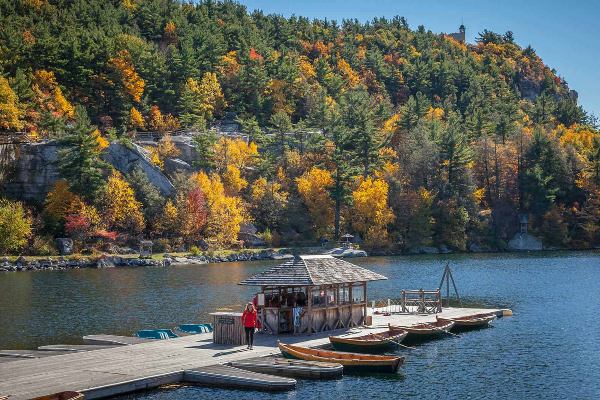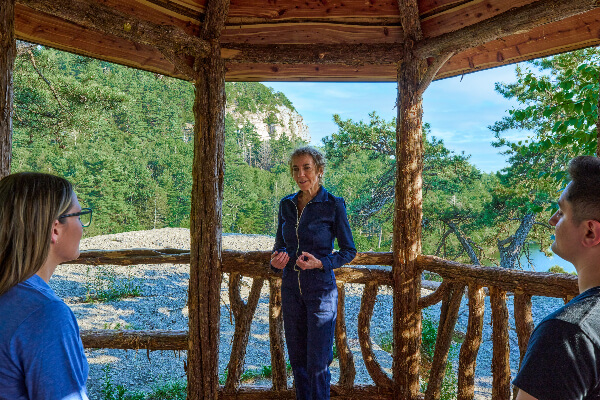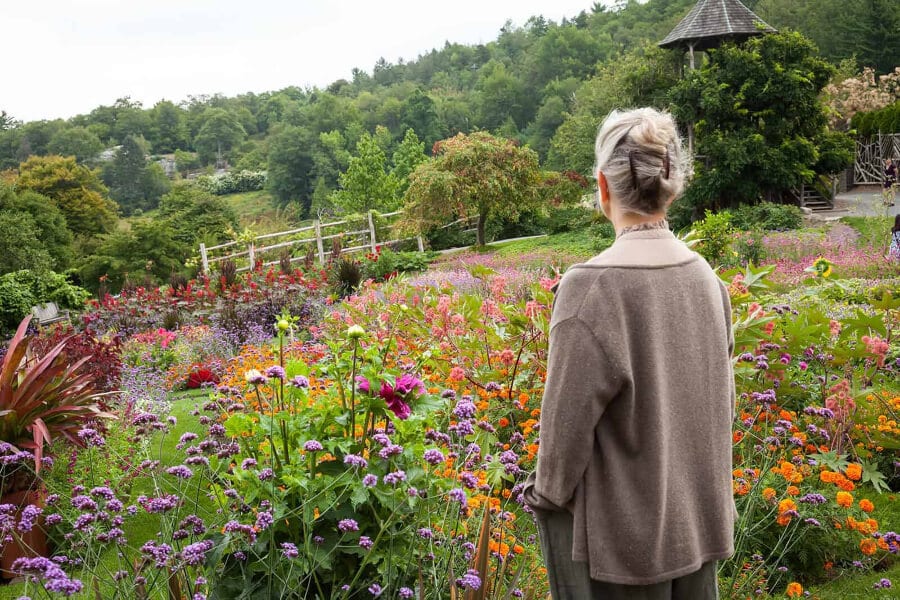Life had lost its spark. For me, this happens every August, my least favorite month and one I consistently mismanage with embarrassing ineptitude. This year my annual funk was exacerbated by a serious case of FOMO. I know most people didn’t spend the entire summer frolicking on beautiful beaches, but social media sure made it look that way.
So why was I alone in New York City, which was so hot and humid I didn’t even want to leave my air-conditioned apartment? Not that there was anyone to play with if I did; everyone I knew was out of town, and my children had the nerve to grow up and get busy with their own lives. Which left me lonely, disgruntled, and extremely bored.
Even if my narrative is ‘I’m lonely and I will be lonely forever,’ there’s something in this moment I can focus on and feel joy.
I do recognize that the research on happiness suggests it’s an excellent idea to leave your apartment every once in a while. I also understand that exposure to nature reduces depression and high blood pressure. My apartment even overlooks a lovely park. Did I get myself out there to feed the squirrels, if not the possibly rabid raccoons that prowl the greenery like masked bandits after dark? No I did not. I holed up inside, feeling sorry for myself and praying that the power grid wouldn’t give out. Inertia and the sweltering dog days of summer overpowered my ability to enjoy anything at all—until a sudden opportunity arose like a miracle. Would I like to head upstate and wallow in nature under the most sybaritic of circumstances? I was already packing.
Read More: Boost Your Happiness by Doing This Everyday
Lakeside Forest Bathing

It had been years since I visited Mohonk Mountain House, an historic resort in New York’s Hudson Valley. Built in 1869 by two Quaker brothers, the hotel—which looks like a rustic fairytale castle sprawling along a scenic ridge of the Shawangunk Mountains—is still owned and operated by the same family, the Smileys. Overlooking a deep glacial lake that glows a luminous shade of aquamarine, the hotel is surrounded by a pristine 8,000-acre nature preserve of woods and fields and lakes and streams. From kayaking and canoeing on the water or hiking, cycling, rock-climbing and horseback riding in the woods to ice-skating and cross-country skiing in winter, Mohonk is a year-round nature-lovers’ paradise for all ages. Every afternoon, while tea and homemade cookies are served in the parlor, children cluster on the dock to feed the alarmingly large trout that leap from the roiling waters to compete for more than their fair share of fish food.
But I am even lazier than I am old, so my personal preferences gravitate toward the resort’s award-winning spa, pool, and outdoor hot tub. During the pandemic, Mohonk added new options for immersion in the idyllic natural setting, from forest bathing walks to lavish meals in the woods. Who could resist breakfast at The Granary, an outdoor dining area overlooking the lake where the smells of smoked country bacon, skillet cornbread and apple crumble mingle with the scent of cedar wafting through the air?
Then there’s a gentle walk up the path to the Summerhouse, an open-air log cabin aerie where you can enjoy an outdoor massage while listening to birdsong as whispery breezes rustle in the canopy of leaves overhead. The invigorating fragrance of juniper, spruce, and pine massage oil gives your sense of smell another jolt, and the soothing sounds and sensations all ground you in the present moment—a key premise of mindfulness, a philosophy and practice that is deeply embedded in the culture of Mohonk.
Mindfulness Mainstreamed

Nina Smiley, director of Mohonk Mountain House’s mindfulness programming.
A longtime teacher of mindfulness meditation and co-author of Finding Mindfulness in Nature, Nina Smiley is the resort’s director of mindfulness programming and the widow of the late Albert Smiley, the hotel’s former president and CEO, who represented the fourth generation of the Smileys to head up the family business. Nina is also a fervent believer in mindfulness as the answer to problems ranging from sleep and eating issues to loneliness, grief and anxiety—a lifelong passion that is validated by the burgeoning global wellness movement. “I’m so thrilled that mindfulness has been mainstreamed,” Smiley says. “It’s being used.”
Although the spa attracts a growing proportion of men, the wellness movement has inspired many women to expand their desire to care for others with a growing focus on taking care of themselves. “We’re not just talking about wellness physically, but about well-being emotionally and spiritually,” Smiley explains. “Mindfulness is about being open to what’s right here, right now, without judgment. It’s not just about how you look; it’s about how you feel and who you understand yourself to be. It’s not all or nothing; the phrase that I use to support my understanding of this is ‘both/and.’ The either/or is very rigid, but this allows you to say, ‘Okay, well, I slipped up, but I can do something differently in the next moment; I don’t have to wait until next week or next year.’ Each moment is a choice — and how freeing that is!”
Mindfulness applies to everything. As a skill set, it’s always available—only a breath away.
When Smiley’s husband of 44 years died in 2018, she found solace in her practice of mindfulness. “I used it to be present with grief, and to understand grief as a process,” she says. “There was a moment when I was wailing and keening and crying; I was beside myself, but I didn’t have to fight it. It would pass; I would be calm, and there would be the joy of being outside and present in nature. Even if my narrative is ‘I’m lonely and I will be lonely forever,’ there’s something in this moment I can focus on and feel joy. When you come back to this moment and take a breath, there’s a sense of spaciousness and happiness; I may not like what’s going on, but the emotions are not totally locked down. Mindfulness applies to everything. As a skill set, it’s always available—only a breath away.”
To Smiley’s astonishment, the process of mourning her previous life ultimately led her to a newfound love with an old friend. Mindfulness honed her receptiveness to the possibilities of each unfolding moment, and life is indeed full of surprises.
The Hummingbird Cometh
As for me, the trip proved to be just what the doctor would have ordered. “We evolved outdoors; living inside was a recent event in human history,” says Dr. Richard Friedman, a psychiatrist and director of psychopharmacology at Weill Cornell Medical College. “So there are evolutionary reasons, aesthetic reasons and neurobiological reasons why being in nature makes people feel better. Every single nature writer from the Greeks to the Transcendentalists talks about the effect of being reconnected to nature. It makes people feel peaceful.”
We evolved outdoors; living inside was a recent event in human history.
It’s particularly helpful to make an effort to do something new rather than settling for your normal routine; novelty plays a significant role in boosting happiness, which is one reason why people enjoy travel so much. “The reward centers of your brain are activated by unexpected situations,” Dr. Friedman says. “When you go on your usual walk, it’s humdrum. If you go into a new place, take a new walk or a new bike ride, it signals your brain that this is important, this is pleasurable.”
My last conversation with Nina took place on a promontory overlooking Lake Mohonk, on a glorious day with brilliant blue skies. “There are different entry points, but with mindfulness in nature, the spaciousness that surrounds us is a metaphor for mindfulness,” Smiley says. “The ripples on the lake, the sunlight—they remind me of impermanence. They remind me that everything is constantly changing, and I can be present in this moment.”
Suddenly a hummingbird darted in front of us and hovered in the air, glimmering iridescent in the dappled sunlight. For a breathtaking moment, time seemed to hang suspended. When the hummingbird soared away, we both exhaled with audible delight. Like Smiley’s reminders to pause and bring myself back to the present, the memory of that hummingbird has stayed with me. All I have to do is think of it, smile and breathe. I can’t remember the last time I felt this happy.
All photos courtesy of Mohonk Mountain House.
Read More: Why People Our Age Stayed Happier Through the Pandemic
***
Leslie Bennetts’ most recent book is Last Girl Before Freeway: The Life, Loves, Losses, and Liberation of Joan Rivers.





















0 Comments